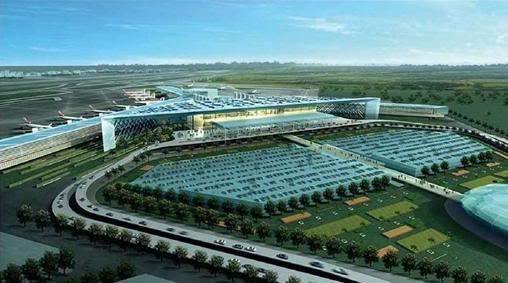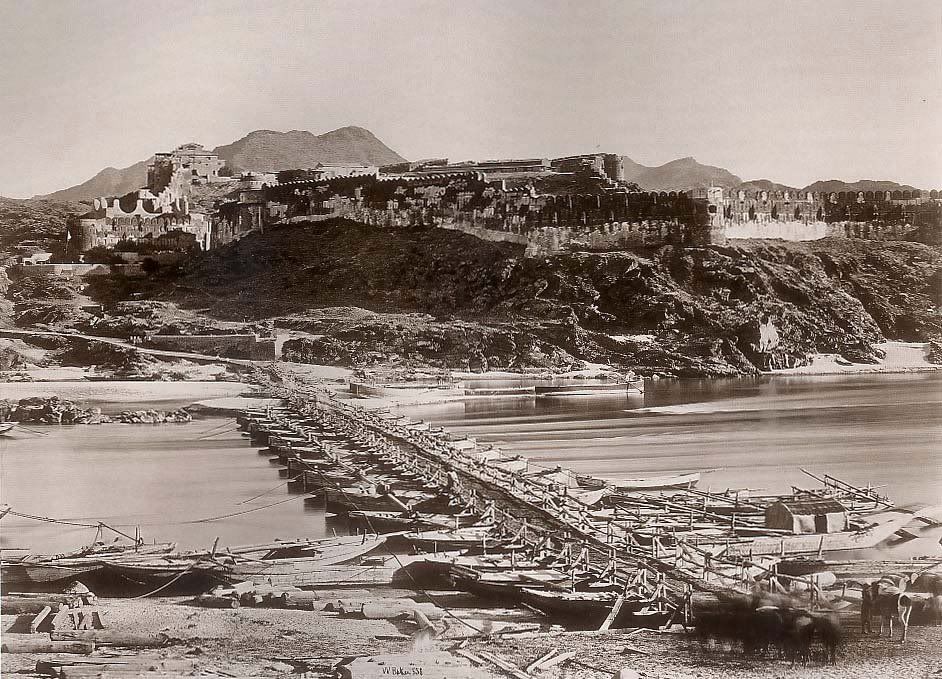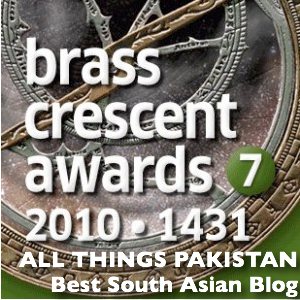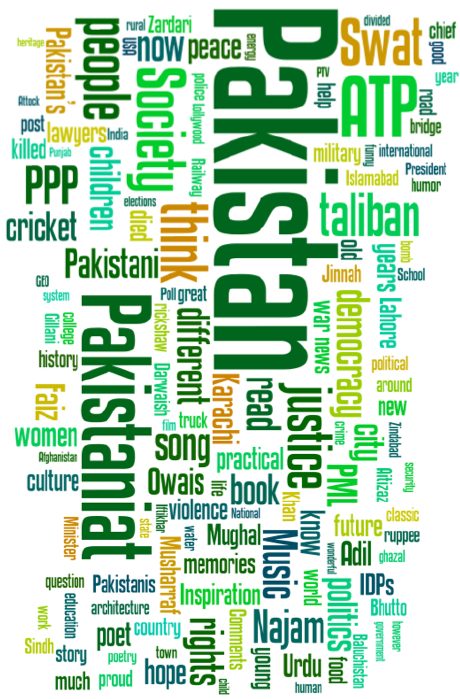Take a good look of the photo of Attock Fort above as I am going revisit it towards the end.
The use of term science and technology subconsciously suggests that science comes first and technology is a product of science. There is a growing sense in the West that this linear thinking is disconnected with reality. The new thinking states that most of the science could not have been made possible without the availability of technology. While this discussion is best left to people with a lot more cerebral, I would like to focus on the question of relative importance given to technology and science in the developing world in general, and Pakistan in particular.
Countries like Pakistan have to make smart choices in terms of allocation of limited human resources and money. My experience in Pakistan leads me to believe that there is a simplistic view of technology and science.
Now I know that every time I write “technology and science”, something in your brain says that this author is again miss-typing science and technology. This is the mental programming which subconsciously makes us think of the science’s supremacy over technology. So we have titles like “Minister of Science and Technology”. Which is why most, if not all of them are scientists. By choosing scientists to be in the leading positions in the policy making arm of the governments, results in policies that favor science over technology. There is a lot of good science that can be performed in developing countries specific to the inherent uniqueness of their surroundings.
Research in developing the right kinds of seeds, development of drugs against local diseases, material for construction suited to the local climate and terrain etc. are all worthwhile areas of research. But research in more general areas do not get the Return On Investment (ROI) as it does in developed world due to longer gestation period and lack of entrepreneurial structure. By contrast, investments in technology are more immediate and contribute to a rapid creation of wealth. The eight hundred companies created by just the MIT alumni, generate $60 billion every year. Most in the Chinese Communist Party leadership have engineering degrees. I would argue that US was an ascendant power when engineers like Ford, Hughes, Hewlett Packard ran the companies, and has started to go down with leaders having MBA degrees.
Trying to formulate a science and technology (S&T) policy in the absence of a strategic development policy is like putting horse before a non existing cart. The web sites of the fifteen departments under the Ministry of S&T, have only a couple that have lists of projects. Most of the activities are procedural in nature. The research institutes are in many instances conducting developments of products that are implementations of existing products. It is a case of scientists attempting to do engineering.
There are some instances of commendable development under the leadership of Dr. Atta ur-Rehman in the recent past. Raising the salaries of teachers and investment in the infrastructure were steps in the right direction. Similarly increasing scholarships for studies abroad was a long term investment that will surely bring rewards. But these to me are hygiene factors. Identifying technical areas like biotechnology and nanotechnology as areas of investment are the result of bottom-up academic-centric thinking.
The first and foremost need is to identify markets of strategic importance that we would like to excel globally. In a highly connected world, the leaders of the respective markets tend to take the lion’s share of it. For any country to excel in any market there has to be something inherent in the eco system of the country that gives it an unfair advantage compared to other countries. If it was simply a matter of throwing money, then the oil rich Arab countries would be dominating many areas of the global market. In reality they are no where to be seen despite their incredible wealth. Timing is equally important in terms of investing in a particular market. Being too early results in a lower ROI due to small market size; being too late results in competition with established large players. Being a leader in a particular market takes a huge amount of human and monetary resources. So only a few markets can be realistically targeted. Nokia in Finland generates $60 billion in sales annually. It employs 40,000 engineers in its R&D. Pakistan produces only 10,000 engineers every year.
Mathematics is the language of both technology and science. My experience during running a technology company in Pakistan left a lot to be desired in the area of mathematics. This is very unfortunate as Pakistanis are inherently very good at mathematics. My sense is that the lack of capability is due to lack of good teachers. If there is anything worth importing from India, it is their mathematics teachers from Southern India. If that is too difficult to achieve due to political reasons, there are many other countries like Turkey where teachers could be brought in from to develop our teacher training programs.
Focus on high margin higher tech products. It is impossible to maintain the seventh largest armed forces in the world based on the export of grey cloth and textiles. The bulk of value creation in the world has moved away from manufacturing to Intellectual Property based products and services. We are lucky to have the geographic proximity to China, which is the manufacturing super power of the world. We are also very fortunate to have an all-weather relationship with her. The development of JF-17 jet fighter and PAKSAT-IR satellite in collaboration with China are steps in the right direction. This strategy would free a lot of capital from having to invest upfront in the manufacturing infrastructure. We should make learning Chinese mandatory in engineering universities.
Just like narrow focus is needed in identifying markets, the investment in infrastructure for achieving excellence can only be done effectively in one or two regions. Even in developed countries there are only a handful of centers of excellence like the Silicon Valley, Bangalore or the 128 technology highway. Once the market has been identified, we need to identify the region for making it happen.
We need to create and grow the engineer-entrepreneur class that under stands how to effectively compete in a global market. No amount of technology and research is any good if it cannot provide a return on investment. This can only be achieved under the leadership of a civilian entrepreneur class. Our existing Seth class is totally unfit for the task at hand. Pakistan is fortunate in this regards in having a large technical diaspora. Some of whom have now started to return. Organization of Pakistani Entrepreneurs of North America (OPEN) is engaged in Pakistan in conjunction with MIT in encouraging entrepreneurs in the IT area through Business Acceleration Plan competitions and the establishment of an angel network. OPEN is interested in starting a chapter in Punjab next, so that we can provide mentoring in areas other than IT.
There is a need for a cross department, industry, academia, defense think-tank that identifies the handful of narrow markets that the country will focus on excelling. Some of the global markets that could be potential candidates are listed below with their dollar size and the local advantage:
a. Unmanned Aircraft Vehicles ($12 billion). Domain knowledge of using them.
b. Video games ($40 Billion). Large number of software engineers
c. Medical Devices ($100 billion only in the US). Access to sales channels through the existing surgical tools industry.
d. Health IT. ($50 Billion). Software engineers and need to deliver low cost healthcare to a large and distributed population.
e. Micro Satellite and novel launch vehicles.
These are all innovation driven nascent markets with no dominant player. It is possible to buy some of the early leaders in the West at very low valuations in the current market to get a head start. I have just glossed over these categories. Within each market are a number of underlying technologies. The food chain in each market is quite sophisticated and offers opportunities that can be incrementally exploited.
Pakistan currently exports goods worth $19Billion each year. The technology based exports are a mere $200 million. Software exports are $2.8B and military sales $300 M. While these are small numbers for a country of 180 million people, they are the early rumblings of a high tech and high margin industry in a historically agricultural society.
The principal challenges in technology are fundamentally social in nature. They are:
a. Education system geared towards creativity.
b. High quality engineer-entrepreneur class that has a global vision.
c. Secure and inviting society with good infrastructure.
d. Trust in private enterprise with public and defense funding.
e. Protection of Intellectual Property.
f. Creation of Venture Capital.
The photo of the fort at Attock, taken by a British photographer William Baker in 1863, is the birth place of the famous hindu mathematician Panini. Panini was born in 520 BC and is credited as the forerunner of the modern formal language theory used to specify computer languages. Attock was the center of the Gandhara civilization that rose in 600 B.C. The fort was constructed during Akbar’s reign in 1581 and served well to protect his empire. During this period European nations of Holland, Spain, France and Britain were developing the technology of putting guns on sea faring vessels.
The great moghul empire was overwhelmed because they did not develop this technology. In fact the inhabitants of a very small and remote island got to rule the world because they perfected this technology.
Had Akbar invested in developing a seafaring Navy, the photo of the fort could easily have been of a Scottish Fort taken by an Indian. As luck would have it the British Army is once again roaming just 100 miles West of this fort today.
The Karakoram Highway that connects Pakistan with China ends very close to Attock. Pakistan’s premier technology center of Aeronautical Complex at Kamra is just few miles East of Attock.

The photo above is of under construction Gandhara Airport, Islamabad
With the development of Islamabad Airport, NUST, GIK Institute, UET, Heavy Mechanical Complex, College of Aeronautical engineering , PINSTECH etc., the region between Islamabad and Attock is primed to become the hub of technology with the right kind of vision and leadership in technology and science. This region was great in six century BC, magnificent in the sixteenth and could once again become a model modern society where sub-continent sensibilities blend in with the Chinese and Western technologies to raise the quality of life of the surrounding regions.




















































and regarding this Indian Phenomena; well this is a problem with Pakistani researchers and teachers. If their bag comprise one book only, it must be an Indian book!
Unfortunately I could never developed the interest to read an Indian book. Rather American books proved my companions in all the good and bad. They are still my mentor.
Even there are good books from Pakistani authors which I love but certainly NO INDIAN BOOK please and rarely any EU or UK origin book.
Best piece I read from a Pakistani on Science and Technology after my graduation in Physics 5 years back.
This is an “engineer biased” article which I was not expecting from a “technology person” who has been head of a big technology organization. The differentiation which you provided btw scientists and engineers is usually provided by fresh graduates or university students. Look at the top defense companies websites of the world and see where they keep scientists and engineers. They will never get biased btw scientists and engineers. Look at Qinetic, look at Sharp labs Europe, look at dsdw and many many more. More than 50% comprise physicists and remaining 50% other engineers. GE has a job opportunity for “sales manager” having a degree in either “sciences” or “engineering”. Check out any international “engineering” organization and see there career advertisement and see how differently (if any) they treat people with science background and engineering back ground.
It would be interesting for you to know that in Finland Physicists are awarded with an engineering degree and they are called engineers. Nokia comprise a “reasonable” amount of physicists.
At one place you are saying technology people are ahead and at second place you are praising mathematician and accepting your organization’s lack in achieving the goal due to lack of good mathematicians. You must know that mathematicians come into the category of scientists. As a side note good thing with physicists is that they can replace mathemticians as well as engineers. But engineers can not replace mathematicians although in many cases they are able to replace physicists. You said that due to SnT our ministry is not productive which it could be in case of TnS. I think you forgot Dr. Samar Mubarkmand whose brainchild is NDC and many other organizations which employ a lot of engineers besides scientists and which has done some remarkable jobs for Pakistan. Dr. Samar is a physics graduate and then a physics PhD. Where would you like to put DR. AQ Khan? An engineer or a scientist? He is physics graduate further specialization in metallurgy.
But your “central idea” of this article is correct that “we are not manufacturing high tech products”. Let me say “we are not manufacturing any type of products except fertilizers”. Our manufacturing capabilities are miserable and if we exclude china out of the picture, we would stand no where!
The only good thing (or one of the few good things) in Pakistani Government is that we are still giving scientists a proper place which our pvt sector is not doing.
The problem is something else and solution is something else. Yes you are right that we need to start high tech manufacturing in Pakistan because we have all the necessary facilities for that but question is who will manufacture them? Unfortunately we have not that talent who can independently think and can put what is on paper into physical condition.
I had written an article not exactly similar to this but if it would be published you would find very interesting facts and figures. It was published in an ezine http://www.thegreenkaleidoscope.com but now this website is not working otherwise I must provide you the link.